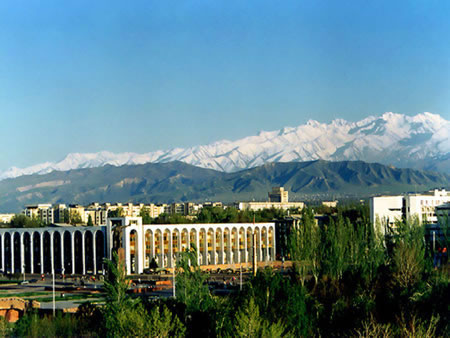The Birth of JIDC...A new kind of Journal
In the beginning . . . there was . . . an Idea . . . JIDC
There is an old saying that “Success has a thousand mothers and failure has none”. JIDC, I am proud to say, has thousands of mothers, fathers, sons and daughters. Truly, thousands. The success is of JIDC is the fruit of the dedication and hard work of editors, mentors, proofreaders, page setters, reviewers, web designers, web wizards, translators, and of course the authors who contribute their precious work to JIDC.
Interestingly, I am frequently asked how JIDC began. In a way it began overlooking a mountain in Bishkek, Kyrgyzstan, in May of 2006. A great number of my associates were attending a meeting—the first International Meeting of Infectious Disease in Central Asia, in Bishkek, Kyrgyzstan. We had many intense discussions on the problems facing scientists from developing countries attempting to publish in predominantly western journals and from these discussions evolved the unorthodox idea of a journal that was dedicated to scientists and infectious disease in developing countries.
Many of us had long recognized that scientists and infectious disease science from developing countries were dramatically underrepresented in journals published in western countries. The underlying science from infectious disease clinicians and scientists, we believed, was of a high calibre, but often the writing and presentation within manuscripts were not. The solution, we summarized, in the majestic scenery of Bishkek, was to provide assistance in the writing and presentation of data for scientists’ draft JIDC manuscripts. We thus added to JIDC a mentor system to guide and aid authors from developing countries with both writing skills and manuscript organization.
But alas, finances presented the greatest hurdle for scientists to publish and for the JIDC to function. Many journals require a payment of sorts to be made for accepted manuscripts to be published. The average going rate of $3,000 USD in western journals is manageable by western scientists, but the amount is simply out of the reach for many scientists and clinicians in developing countries. In fact, this may represent nearly one half a year’s wages in some developing countries. The JIDC, we declared, must be free of fees for those who cannot afford them. JIDC today is open access, free to submit, and the publication fee is waived for those who cannot afford the modest fee of 200 euros. The financial burden of maintaining JIDC is shouldered by volunteers of JIDC and grants from foundations and organizations such as the Foundation of Bank of Sardinia, Sardegna Ricerche, the University of Sassari, Shantou University Medical College, the Li Ka Shing Foundation, and the University Health Network in Toronto, Canada. Our heartfelt gratitude goes out to these people and organizations.
Through the months and years that followed the Bishkek meeting, JIDC was able to attract the dedicated team that now manages submitted manuscripts, reviews manuscripts, edits manuscripts, and publishes papers. The success of JIDC is the success of the many people who have joined in this exciting and rewarding journey! As we look forward to our fifth anniversary in 2012, the future is in our hands and it is a glorious sunrise.
Salvatore Rubino, Editor in Chief hu mble servant…..
mble servant…..
JIDC Website: http://www.jidc.org/index.php/journal
Welcome to
Open Access Week
Organized by:
in partnership with our
Advisory Committee
Groups
-
Open Access Somalia (Som…
1 member
-
Open Access Australia
35 members
-
Open Access Mexico
48 members
Twitter Feed
All content subject to a Creative Commons Attribution 4.0 License unless specified differently by poster. Created by Nick Shockey.
Powered by
![]()


You need to be a member of Open Access Week to add comments!